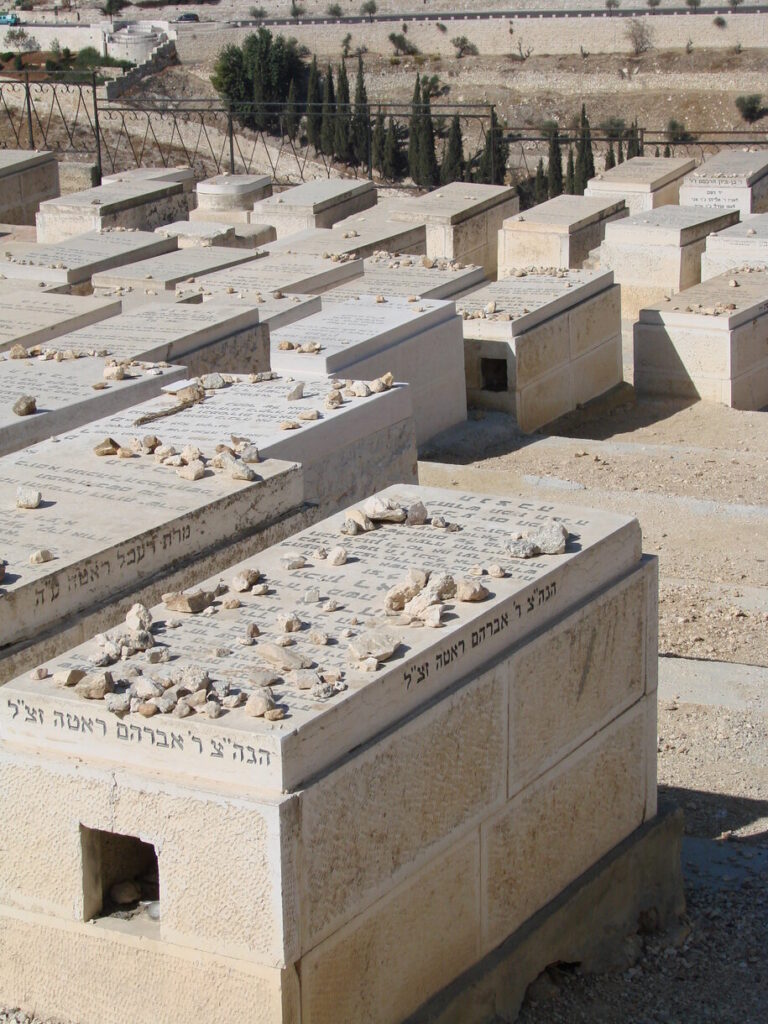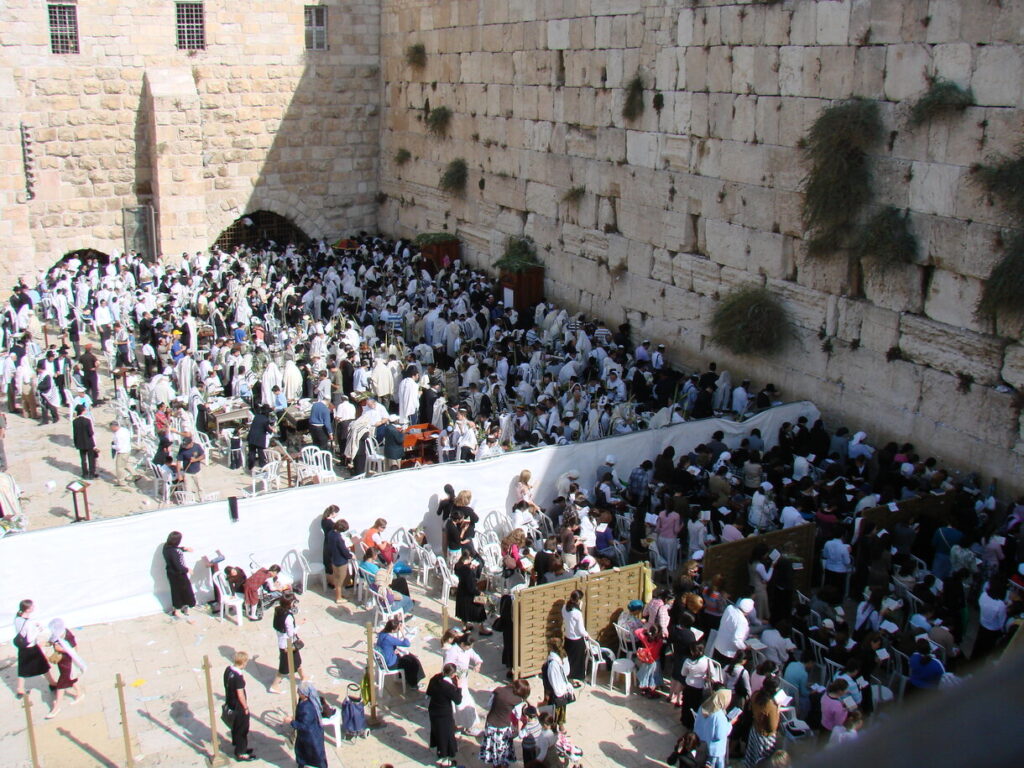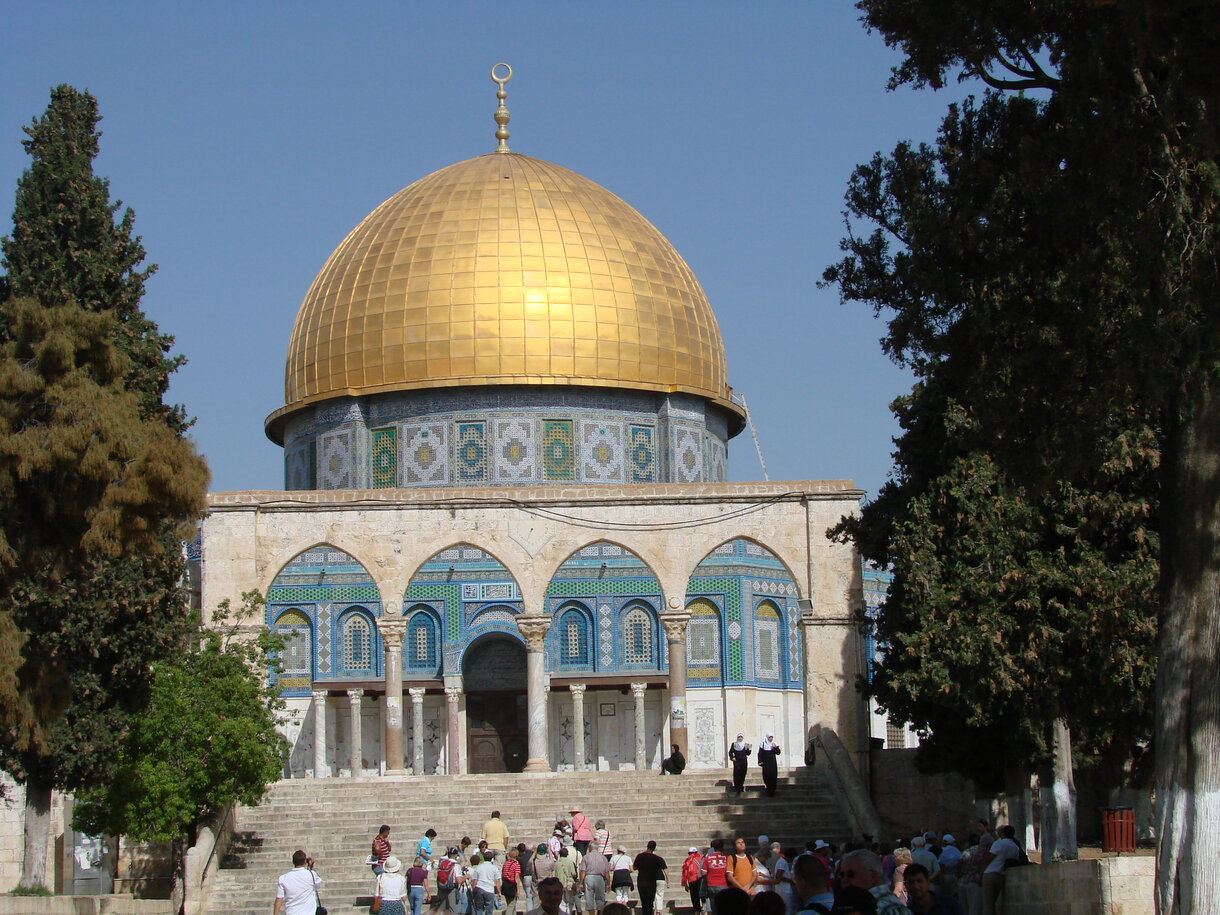Jerusalem: Where Heaven and Earth Intersect
Church of the Pater Noster: Where Prayer Was Born
The Church of the Pater Noster commemorates where Jesus taught his disciples the Lord’s Prayer. Built over a 4th-century Byzantine church by Constantine’s mother Helena, the current Carmelite convent (1875) preserves an extraordinary tradition:
“When you pray, this is what to say: Father, may your name be held holy, your kingdom come; give us each day our daily bread, and forgive us our sins, for we ourselves forgive each one who is in debt to us. And do not put us to the test.”
Luke 11:2-4
The cloister walls display the Lord’s Prayer in over 140 languages on ceramic tiles – from ancient Aramaic to modern tribal dialects. This living testament to Christianity’s global reach continues growing as new translations are added.
Dominus Flevit: Where Jerusalem Wept
The tear-shaped Dominus Flevit chapel (“The Lord Wept”) marks where Jesus foresaw Jerusalem’s destruction. Designed by Antonio Barluzzi in 1955, its unique architecture:
- Windows shaped like teardrops
- An altar mosaic depicting a hen gathering chicks (Luke 13:34)
- Breathtaking views through the “weeping” windows toward Temple Mount

Mount of Olives: Sacred Drama Unfolds
This ridge east of Jerusalem’s Old City witnessed pivotal biblical events:
- Gethsemane: Where Jesus prayed in agony before arrest
- Church of All Nations: Built over the “Rock of Agony” with stunning gold mosaics
- Ascension Site: Commemorated by a 12th-century Crusader chapel

Ein Kerem: Where Prophets Leapt
This picturesque village houses:
- Church of the Visitation: Where Mary proclaimed her Magnificat
- St. John the Baptist Church: Built over his traditional birthplace
- Mary’s Spring: Where Elizabeth reportedly hid with John
Temple Mount: Sacred Ground Contested
This 35-acre platform is holy to three faiths:
| Judaism | Islam | Christianity |
|---|---|---|
| Site of First & Second Temples | Al-Aqsa Mosque (3rd holiest site) | Jesus taught and cleansed the Temple |
| Western Wall remnant | Dome of the Rock shrine | Early Christians worshipped here |
Visitor Note: Non-Muslims enter through Mughrabi Gate (Western Wall Plaza), with strict security and modest dress required. Opening hours vary.

Western Wall: Judaism’s Holiest Site
This 2,000-year-old Herodian wall is all that remains of the Second Temple. Visitors observe:
- Prayer customs: Rocking (“shuckling”) during prayer symbolizes devotion
- Note tradition: Slips containing prayers placed in wall crevices
- Gender separation: Men require head coverings (kippot available)
The wall’s stones bear witness to centuries of Jewish longing – from Roman destruction to modern pilgrimage.


Leave a Reply